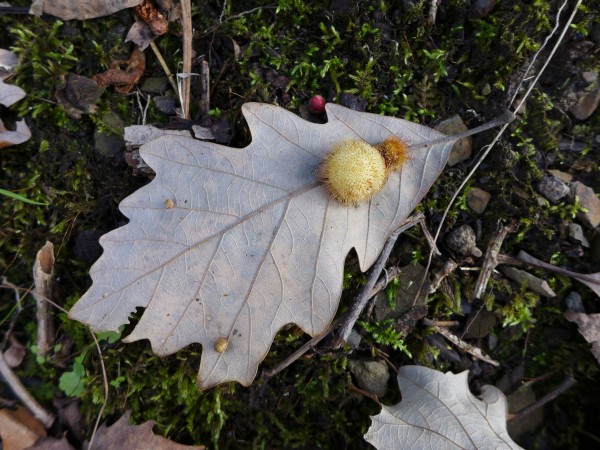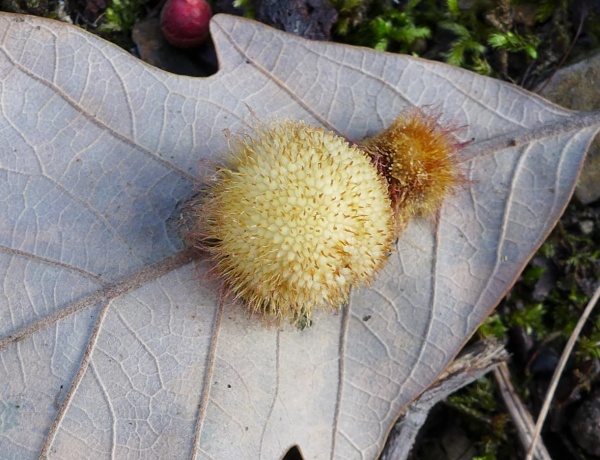
Back in November I found these round hairy growths on the backs of many oak leaves at Hillman State Park in Washington County, PA.
From above they look furry but up close I can see that they’re fibrous.

No doubt these are galls, structures grown by the tree itself in response to chemicals deposited by a tiny insect that laid eggs on the underside of the leaf. The insects are usually gall wasps (Cynipidae) whose larvae are protected by the gall.
There are 750 species of Cynipidae in North America, best identified by the characteristics of the gall and the plant it’s growing on. What does the gall look like? What species is it growing on? Where is the plant located (geographically)? What part of the plant is the gall growing on? If on a leaf, is it on the upper or under side? Is it on a twig? A bud? Etc. etc.
Extensive searches of bugguide.net produced similar photos but no final identification. The closest was this one: A gall wasp (Cynipidae) in the genus Acraspis, photographed in Guelph, Ontario.
So I’m back where I started. I know the name of the wasp (as far as I care to know) but what is the name of the gall?
(photos by Kate St. John)
Hi Kate,
Thanks for 6 great years following your blog. Your blog cetainly provides us with a limitless view of our astonishing home.
The gall puzzle you have given us is of course interesting. I am sure you know and regularly talk with the extraordinary folks at Carnegie Museum of Natural History’s “Bug” Department. What have they concluded from this post of yours?
Looking forward to our Peregrine Falcons and Bald Eagles adventures. Thanks to you again along with all the individuals and groups involved with providing the access that otherwise would remain mostly unknown. Also the protection for our environment which your blog illustrates persuasively through your observations of endless lifeforms and the balance required for all life to exist. “See something say something”
All the best in the future.
Hi Kate, it may be the Oak Hedgehog Gall, listed on page 104 of this free out of print book on galls called “Common Galls of New York.”
https://books.google.com/books?id=wVIoAAAAYAAJ&pg=PA124&lpg=PA124&dq=common+galls+of+new+york&source=bl&ots=KXGhvqjG2_&sig=R9uoa4RFpfui1oGuYpSmCYBbt34&hl=en&sa=X&ved=0ahUKEwiq6pn4qpPKAhVKOSYKHdKFBwkQ6AEITjAJ#v=onepage&q&f=false